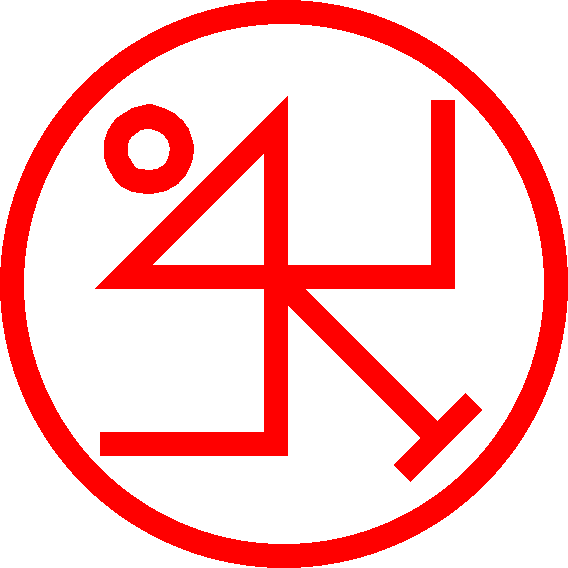All right. In the previous post we talked about how syllable blocks fit together in Hangul. Now we’re ready to break down the song’s title into its individual jamo. Remember that a jamo is a Korean “letter”, and that in Hangul you pack the jamo into blocks of two or three symbols to make syllables.
“gang”
Let’s look at the first syllable, gang:
Great. The “ŋ” symbol is the International Phonetic Alphabet symbol for the “ng” sound. See, it’s a ligature of an “n” and a “g”.
That’s cool and all, but what if I told you that the jamo for the letter “g” is actually a diagram of how your mouth looks when you make the sound?! Imagine that your lips are to the left and your throat is to the right. The top bar is your upper palate. Now make the sound “g”. You’ll feel your tongue go up at the back of your upper palate, while it goes down in front. So the curved/diagonal line represents your tongue touching the back of the roof of your mouth, but down in front. Awesome!
The “ah” sound in the middle of the syllable is the tall symbol with a small stroke. I’m not going to get into too much detail about the “why” of the vowel symbols. It has to do, believe it or not, with Yin and Yang!
And the final “ng” sound is a circle. For now, just accept that — there’s a reason it works that way, which I’ll explain at the end of the title.
“nam”
The second syllable, nam, is even simpler. The right-angle-ish jamo is the N, and it represents the tongue folding up from the bottom of your mouth (remember, that’s at the right of the symbol) to the back of your upper teeth (at the left of the symbol) when you say “N”. Try it!
The “ah” sound is the same as in the previous syllable.
The M at the end of the syllable is represented by the square jamo. That is supposed to be a picture of your lips pressing together to make the sound “M”. Nifty!
Extra note: “k” vs. “g”
I don’t want to get you confused if you look elsewhere on the web and see someone say that jamo is “k”, not “g”. I’m calling it “g” because the song is usually spelled “Gangnam Style”. But if you listen very carefully at the beginning of the song, you’ll hear that PSY sings it in a way that makes it a little hard to tell if it’s a “k” or a “g”. The reason for that is that Korean breaks down its stop sounds (k, g, p, b, t, d) a bit differently than English does. You’ll have to dig a little deeper into Korean if you want to learn those fine points. But I wanted to make sure you didn’t go somewhere on the web and go “Hey! That’s K, not G!” and think I’m lying to you.
Okay! In the next post, we’ll tackle the difficult word “Style”. It’s an English word being written in Hangul, which … well, is not a system designed for English. We’ll see how that works!


